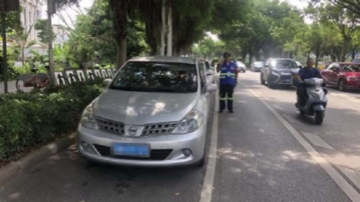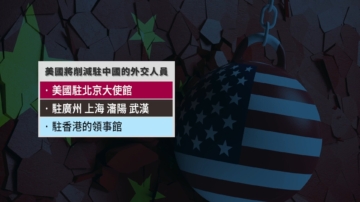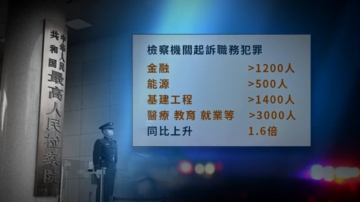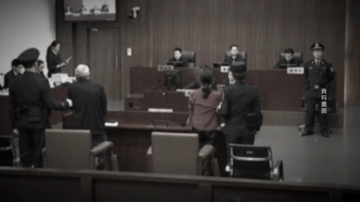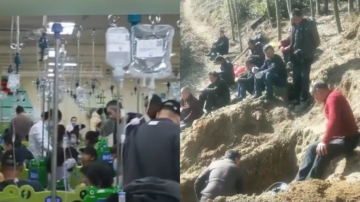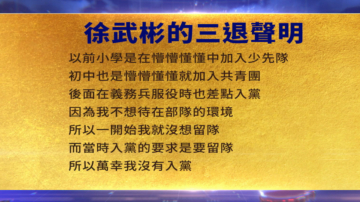【新唐人2013年12月03日訊】在俄羅斯西伯利亞城市托木斯克市中心的列寧大街上,有一棟由過去的牢房改建而成的前蘇共祕密警察監獄博物館,這個博物館早在1996年已對外開放。而今這棟建築仍保存著冷戰期間,蘇聯祕密警察遺留的紅色恐怖氛圍。有評論認為,中共帶給中國的紅色恐怖和蘇聯相比,有過之而無不及。
位於西伯利亞小鎮托木斯克(Tomsk)的中心,一棟兩層樓高不起眼的紅色磚房內,前蘇共祕密警察辦公室,就隱藏在這棟樓房的地下室裡。
在蘇聯十月革命後,地下室被當作祕密警察辦案人員的辦公室,那裡有一間接著一間看不見陽光的小密室,囚禁著反對蘇共的知識份子和平民。受害者當中,不少人是學者、詩人和藝術家等。1923年到1944年,斯大林進行「大清洗」期間,這座建築物的庭院被當作刑場,許多人被處決後就地掩埋。
如今這一棟具有歷史意義的大樓,被保留下來,成為博物館,見證著當年極權政治的真實一幕。
時事評論員夏小強:「人類歷史在上個世紀發生的最大的悲劇,就是蘇聯共產黨帶給全世界的這場紅禍,這場紅禍所到之處,全世界只要是共產專制下的國家,都伴隨著饑荒、戰亂、血腥和殺戮。如今在共產黨政權結束之後,俄羅斯出現的揭露紅色恐怖的博物館,可以起到反思歷史、警醒後人的作用。」
《美國之音》12月2號報導介紹,現在俄羅斯這個前蘇共祕密警察監獄博物館內,擺設著很多酷刑的刑具和圖片說明,牆上貼滿了當時受害者的的黑白照片,其中不少人是被酷刑處決死亡的。
而博物館負責人哈涅維奇表示,斯大林時代,有50萬人被驅逐到托木斯克,其中一半的人因為疾病、嚴寒和飢餓而死去。哈涅維奇還說,共產黨從執政的第一天起就開始政治迫害。
旅美中國問題研究人士張健:「展示出來以後,給世人除了震驚之外,其實給我們最大的教育意義,就是不要忘記過去,但是過去就是由現在一點點來積纍的,因為在納粹時代,人們不相信奧斯威辛集中營,在蘇共時代,他們是不相信斯大林迫害自己本國的國民。」
2007年10月30號,俄羅斯總統普京,前往莫斯科南郊「布托沃射擊場」的「大清洗紀念地」,悼念死於「大清洗」的遇難者。普京說:這樣的悲劇在人類歷史上曾反覆上演,原因是那些看似吸引人的空洞理想,被置於人類的基本價值觀——珍視生命、人權和自由之上。
張健:「每一件的酷刑,更多的是發生在不民主的極權獨裁的國家,尤其像中國、古巴、朝鮮類似這樣的國家,每一天他們的人民都會遭到這個國家有系統、有組織,去殺害人民。」
在中國,從1999年開始,中共也對法輪功學員實施「群體滅絕」。根據調查,被中共酷刑迫害致死的法輪功學員,能查出姓名者至少有3,727位。
據中國大陸逃出來的法輪功學員描述,中共的酷刑至少40種,甚至80種以上,而每次的酷刑,都超過人類身體所能承受的極限。
時事評論員夏小強:「和蘇聯相比,中共帶給中國的紅色恐怖有過之而無不及,因為,中共不僅僅消滅中國民眾的肉體,還消滅中國人的靈魂和思想,用宣傳的謊言和暴力恐怖使民眾成為馴服的工具。」
中共在三中全會結束後設立了「國家安全委員會」。外界分析,中共與前蘇聯一樣,是一黨專政的獨裁國家,「國安會」的設立,就像前蘇聯祕密警察一樣,是凌駕於法律之上的「超級部門」,將成為打壓異見者的祕密工具。
採訪/常春 編輯/黃億美 後製/李勇
USSR Secret Police Museum Exposes Communist Crimes
In the city of Tomsk, Russia, located in the basement
of the building Lenin Avenue 44 is the Memorial Museum,
"Remand Prison of the NKVD."
NKVD was the predecessor of the KGB.
This museum opened in 1996.
The red scare atmosphere was maintained
by the secret police during the cold war.
Our commentators believe the red scare in China today
far exceeds what the Russians experienced.
A former Soviet secret police office was hidden
in the basement of a two-story red brick building
in the middle of Tomsk, a Siberian town.
After the October Revolution, the basement became
a secret prison and an office of the secret police.
The victims included many intellectuals, poets and artists.
Between 1923 and 1944, during Stalin's Great Purge political
campaign, this building served as a prison courtyard.
The adjacent area became a burial ground.
This building has been retained as a museum to expose the
horrible history of terror and the nation's totalitarian past.
Xia Xiaoqiang, Ccommentator: "The greatest historical
tragedy of the last century is this evil red caused
by the Communist Party of the Soviet Union.
The tyranny of communism will only bring famine, war,
bloodshed and killing.
Following the end of the Communist regime in Russia,
a museum exposing the red terror helps to reflect the history
and warn descendants."
In a Dec. 2nd report, Voice of America introduced
the Remand Prison of the NKVD.
This memorial museum exhibits torture instruments
and numerous photos of victims on the wall,
many who were tortured to death.
Museum director Vasily Khanevich said that
in the Stalin era, 500,000 people were deported to Tomsk,
and half of the people died due to disease, cold and hunger.
Khanevich said the political persecution began
at the beginning of the Communist Party ruling.
Zhang Jian, activist: "The exhibition shows the world
the shocking facts (of the Communist terror)
and demonstrates the greatest lesson
of remembering the past.
Current incidents will accumulate and become the past.
In Nazi times, people did not believe in the existence
of Auschwitz concentration camps.
In the Soviet era, they did not believe that
Stalin was persecuting his own people."
Talking with the Press after visiting the Butovo Memorial Site
on October 30, 2007 in memory of the victims who died
in the Great Purge, Russian President Vladimir Putin said,
"Such tragedies have occurred more than once in the history
of mankind.
And they happened when ideals, ideals that were attractive
at first glance but proved empty in the end,
were placed higher than fundamental values –
the values of human life, human rights and freedom."
Zhang Jian: "Every one of the tortures has happened
mainly in countries governed by totalitarian dictatorships,
especially China, Cuba, and North Korea.
Every day, people in these countries suffer from
systematic and organized killing."
In China, since the persecution of Falun Gong practitioners
in 1999, the Chinese Communist Party has killed with torture,
at least 3,727 documented and identified
Falun Gong practitioners.
According to Falun Gong practitioners who escaped from
China, the CCP employs more than 40 to 80 different kinds
of torture measures which exceed the limit the human body
can withstand.
Xia Xiaoqiang, commentator: "Compared to the USSR,
the CCP has caused Red Terror worse than Russia.
The CCP destroy the Chinese not only physically,
but also mentally.
They kill the soul and ideas of the Chinese, and control them
with propaganda lies, violence and horror."
After the Third Plenary Session, the state security committee
established the National Security Council to serve as a super
department above the law and a secret tool to suppress
dissidents, just like the secret police during the Stalin era.
Interview/ChangChun Edit/HuangYimei Post-Production/LiYong
位於西伯利亞小鎮托木斯克(Tomsk)的中心,一棟兩層樓高不起眼的紅色磚房內,前蘇共祕密警察辦公室,就隱藏在這棟樓房的地下室裡。
在蘇聯十月革命後,地下室被當作祕密警察辦案人員的辦公室,那裡有一間接著一間看不見陽光的小密室,囚禁著反對蘇共的知識份子和平民。受害者當中,不少人是學者、詩人和藝術家等。1923年到1944年,斯大林進行「大清洗」期間,這座建築物的庭院被當作刑場,許多人被處決後就地掩埋。
如今這一棟具有歷史意義的大樓,被保留下來,成為博物館,見證著當年極權政治的真實一幕。
時事評論員夏小強:「人類歷史在上個世紀發生的最大的悲劇,就是蘇聯共產黨帶給全世界的這場紅禍,這場紅禍所到之處,全世界只要是共產專制下的國家,都伴隨著饑荒、戰亂、血腥和殺戮。如今在共產黨政權結束之後,俄羅斯出現的揭露紅色恐怖的博物館,可以起到反思歷史、警醒後人的作用。」
《美國之音》12月2號報導介紹,現在俄羅斯這個前蘇共祕密警察監獄博物館內,擺設著很多酷刑的刑具和圖片說明,牆上貼滿了當時受害者的的黑白照片,其中不少人是被酷刑處決死亡的。
而博物館負責人哈涅維奇表示,斯大林時代,有50萬人被驅逐到托木斯克,其中一半的人因為疾病、嚴寒和飢餓而死去。哈涅維奇還說,共產黨從執政的第一天起就開始政治迫害。
旅美中國問題研究人士張健:「展示出來以後,給世人除了震驚之外,其實給我們最大的教育意義,就是不要忘記過去,但是過去就是由現在一點點來積纍的,因為在納粹時代,人們不相信奧斯威辛集中營,在蘇共時代,他們是不相信斯大林迫害自己本國的國民。」
2007年10月30號,俄羅斯總統普京,前往莫斯科南郊「布托沃射擊場」的「大清洗紀念地」,悼念死於「大清洗」的遇難者。普京說:這樣的悲劇在人類歷史上曾反覆上演,原因是那些看似吸引人的空洞理想,被置於人類的基本價值觀——珍視生命、人權和自由之上。
張健:「每一件的酷刑,更多的是發生在不民主的極權獨裁的國家,尤其像中國、古巴、朝鮮類似這樣的國家,每一天他們的人民都會遭到這個國家有系統、有組織,去殺害人民。」
在中國,從1999年開始,中共也對法輪功學員實施「群體滅絕」。根據調查,被中共酷刑迫害致死的法輪功學員,能查出姓名者至少有3,727位。
據中國大陸逃出來的法輪功學員描述,中共的酷刑至少40種,甚至80種以上,而每次的酷刑,都超過人類身體所能承受的極限。
時事評論員夏小強:「和蘇聯相比,中共帶給中國的紅色恐怖有過之而無不及,因為,中共不僅僅消滅中國民眾的肉體,還消滅中國人的靈魂和思想,用宣傳的謊言和暴力恐怖使民眾成為馴服的工具。」
中共在三中全會結束後設立了「國家安全委員會」。外界分析,中共與前蘇聯一樣,是一黨專政的獨裁國家,「國安會」的設立,就像前蘇聯祕密警察一樣,是凌駕於法律之上的「超級部門」,將成為打壓異見者的祕密工具。
採訪/常春 編輯/黃億美 後製/李勇
USSR Secret Police Museum Exposes Communist Crimes
In the city of Tomsk, Russia, located in the basement
of the building Lenin Avenue 44 is the Memorial Museum,
"Remand Prison of the NKVD."
NKVD was the predecessor of the KGB.
This museum opened in 1996.
The red scare atmosphere was maintained
by the secret police during the cold war.
Our commentators believe the red scare in China today
far exceeds what the Russians experienced.
A former Soviet secret police office was hidden
in the basement of a two-story red brick building
in the middle of Tomsk, a Siberian town.
After the October Revolution, the basement became
a secret prison and an office of the secret police.
The victims included many intellectuals, poets and artists.
Between 1923 and 1944, during Stalin's Great Purge political
campaign, this building served as a prison courtyard.
The adjacent area became a burial ground.
This building has been retained as a museum to expose the
horrible history of terror and the nation's totalitarian past.
Xia Xiaoqiang, Ccommentator: "The greatest historical
tragedy of the last century is this evil red caused
by the Communist Party of the Soviet Union.
The tyranny of communism will only bring famine, war,
bloodshed and killing.
Following the end of the Communist regime in Russia,
a museum exposing the red terror helps to reflect the history
and warn descendants."
In a Dec. 2nd report, Voice of America introduced
the Remand Prison of the NKVD.
This memorial museum exhibits torture instruments
and numerous photos of victims on the wall,
many who were tortured to death.
Museum director Vasily Khanevich said that
in the Stalin era, 500,000 people were deported to Tomsk,
and half of the people died due to disease, cold and hunger.
Khanevich said the political persecution began
at the beginning of the Communist Party ruling.
Zhang Jian, activist: "The exhibition shows the world
the shocking facts (of the Communist terror)
and demonstrates the greatest lesson
of remembering the past.
Current incidents will accumulate and become the past.
In Nazi times, people did not believe in the existence
of Auschwitz concentration camps.
In the Soviet era, they did not believe that
Stalin was persecuting his own people."
Talking with the Press after visiting the Butovo Memorial Site
on October 30, 2007 in memory of the victims who died
in the Great Purge, Russian President Vladimir Putin said,
"Such tragedies have occurred more than once in the history
of mankind.
And they happened when ideals, ideals that were attractive
at first glance but proved empty in the end,
were placed higher than fundamental values –
the values of human life, human rights and freedom."
Zhang Jian: "Every one of the tortures has happened
mainly in countries governed by totalitarian dictatorships,
especially China, Cuba, and North Korea.
Every day, people in these countries suffer from
systematic and organized killing."
In China, since the persecution of Falun Gong practitioners
in 1999, the Chinese Communist Party has killed with torture,
at least 3,727 documented and identified
Falun Gong practitioners.
According to Falun Gong practitioners who escaped from
China, the CCP employs more than 40 to 80 different kinds
of torture measures which exceed the limit the human body
can withstand.
Xia Xiaoqiang, commentator: "Compared to the USSR,
the CCP has caused Red Terror worse than Russia.
The CCP destroy the Chinese not only physically,
but also mentally.
They kill the soul and ideas of the Chinese, and control them
with propaganda lies, violence and horror."
After the Third Plenary Session, the state security committee
established the National Security Council to serve as a super
department above the law and a secret tool to suppress
dissidents, just like the secret police during the Stalin era.
Interview/ChangChun Edit/HuangYimei Post-Production/LiYong

